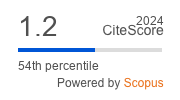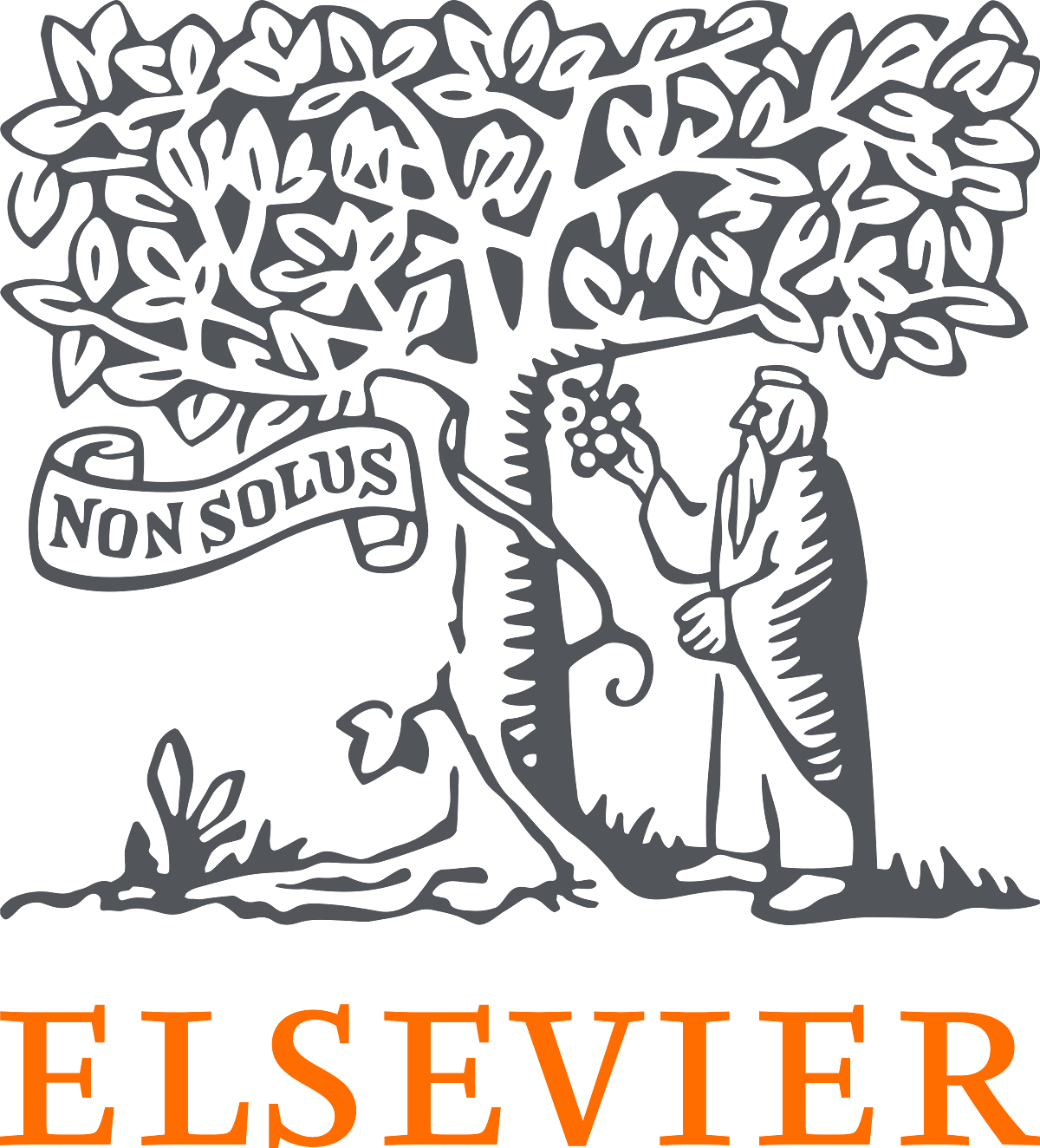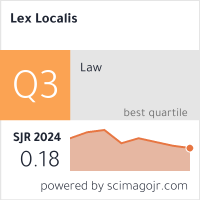Exploring Citizen-centered Digital Reporting in Swiss Municipalities
DOI:
https://doi.org/10.52152/23.2.85-111(2025)Keywords:
popular reporting, financial reporting, user needs, local government, digital reportingAbstract
This paper explores citizen-centered digital financial reporting in selected Swiss municipalities, focusing on local public sector managers’ perceptions of the challenges and opportunities involved in making financial information more accessible, understandable, and usable for citizens. Based on nine semi-structured interviews with officials from small, medium, and large municipalities, the study addresses two research questions: (1) What are the characteristics of citizen-centered digital reporting initiatives? (2) What institutional, legal, and practical challenges and opportunities accompany their implementation? Anchored in transparency and accountability theory, the analysis applies a three-dimensional framework – accessibility, understandability, and usability – to assess digital reporting practices. While certain tools have improved access to financial data, most municipalities struggle to enhance the comprehensibility and relevance of this information for non-expert users. In addition to the often-cited knowledge gap between citizens and public administration, the findings reveal a communication gap shaped by bureaucratic cultures, legal constraints, and resource limitations. Despite these barriers, innovative cases illustrate how digital strategies, visualizations, and storytelling can promote meaningful engagement and local democratic legitimacy. By shifting the analytical lens from citizen expectations to administrative perspectives, the study contributes to the literature on local public finance and offers practical insights for enhancing participatory governance through inclusive digital reporting practices.
References
Barbera, C., Sicilia, M., & Steccolini, I. (2024). New development: Rethinking public sector accounting systems by rediscovering their relational nature. Public Money & Management, 44(8), 727-732. doi:10.1080/09540962.2024.2370550
Biondi, L., & Lapsley, I. (2014). Accounting, transparency and governance: The heritage assets problem. Qualitative Research in Accounting & Management, 11(2), 146-164. doi:10.1108/QRAM-04-2014-0035
Birkinshaw, P. (2006). Transparency as a human right. In C. Hood & D. Heald (Eds.), Transparency: The key to better governance? (pp. 46-57). London, UK: British Academy. doi:10.5871/bacad/9780197263839.003.0003
Blöchliger, H., & Kim, J. (Eds.). (2016). Fiscal federalism 2016: Making decentralisation work. Paris, France: OECD. doi:10.1787/9789264254053-en
Bovens, M. (2007). Analysing and assessing accountability: A conceptual framework. European Law Journal, 13(4), 447-468. doi:10.1111/j.1468-0386.2007.00378.x
Bracci, E., Biondi, L., & Kastberg, G. (2021). Citizen-centered financial reporting translation: The preparers’ perspective. Financial Accountability & Management, 39(1), 18-39. doi:10.1111/faam.12298
Brusca, I., & Montesinos, V. (2010). Are citizens significant users of government financial information?. Public Money & Management, 26(4), 205-209. doi:10.1111/j.1467-9302.2006.00526.x
Bundesamt für Statistik. (2021). Gemeinden. Gemeindeporträts der Schweiz. Retrieved from https://www.bfs.admin.ch/bfs/de/home/statistiken/regionalstatistik/regionale-portraets-kennzahlen/gemeinden/gemeindeportraets.html
Carpenter, F. H., & Sharp, F. C. (1992). Popular reporting: Local government financial reports to the citizenry. Norwalk, CT: Governmental Accounting Standards Board of the Financial Accounting Foundation.
Centre for Financial Reporting Reform., & Zurich University of Applied Sciences ZHAW. (2022). A guide to data storytelling in the public sector—Communicating public finances effectively. Retrieved from https://cfrr.worldbank.org/sites/default/files/2022-11/DST_Guide_2022_EN_EDOC.pdf
Cohen, S., & Karatzimas, S. (2015). Tracing the future of reporting in the public sector: Introducing integrated popular reporting. International Journal of Public Sector Management, 28(6), 449-460. doi:10.1108/IJPSM-11-2014-0140
Cohen, S., & Karatzimas, S. (2022). New development: Public sector accounting education for users—Embedding eLearning and technology in teaching. Public Money & Management, 42(4), 291-293. doi:10.1080/09540962.2021.1986302
Cohen, S., Mamakou, X. J., & Karatzimas, S. (2017). IT-enhanced popular reports: Analyzing citizen preferences. Government Information Quarterly, 34(2), 283-295. doi:10.1016/j.giq.2017.04.003
Corbin, J., & Strauss, A. (2008). Basics of qualitative research (3rd ed.): Techniques and procedures for developing grounded theory. New York, NY: SAGE. doi:10.4135/9781452230153
da Cruz, N. F., Tavares, A. F., Marques, R. C., Jorge, S., & de Sousa, L. (2016). Measuring local government transparency. Public Management Review, 18(6), 866-893. doi:10.1080/14719037.2015.1051572
Del Gesso, C., & Romagnoli, L. (2020). Citizen-centered reporting: Assessing popular financial reporting practice in Italian Decentralized Governments. International Journal of Business and Management, 15(2). doi:10.5539/ijbm.v15n2p1
Eisenhardt, K. M. (1989). Building theories from case study research. The Academy of Management Review, 14(4), 532-550. doi:10.2307/258557
Fahmid, I. M., Harun, H., Graham, P., Carter, D., Suhab, S., An, Y., . . . Fahmid, M. M. (2020). New development: IPSAS adoption, from G20 countries to village governments in developing countries. Public Money & Management, 40(2), 160-163. doi:10.1080/09540962.2019.1617540
FDK-CDF Konferenz der Kantonalen Finanzdirektoren. (2022). Handbuch: Harmonisiertes Rechnungslegungsmodell für die Kantone und Gemeinden HRM2. Retrieved from https://www.srs-cspcp.ch/sites/default/files/pages/2025-01-01-handbuch-hrm2-2.-auflage_3.pdf
Flick, U., von Kardorff, E., Keupp, H., von Rosenstiel, L., & Wolff, S. (2012). Handbuch Qualitative Sozialforschung: Grundlagen, Konzepte, Methoden und Anwendungen (3rd ed.). Weinheim, Germany: Beltz, Psychologie Verlags Union.
Fuchs, S., Bergmann, A., Rauskala, I., & Schmitt, A. (2015). Public sector accounting and auditing in Switzerland. In I. Brusca, E. Caperchione, S. Cohen, & F. M. Rossi (Eds.), Public sector accounting and auditing in Europe (pp. 204-218). London, UK: Palgrave Macmillan. doi:10.1057/9781137461346_14
Haustein, E., & Lorson, P. C. (2022). Transparency of local government financial statements: Analyzing citizens’ perceptions. Financial Accountability & Management, 39(2), 375-393. doi:10.1111/faam.12353
Haustein, E., Lorson, P. C., Oulasvirta, L. O., & Sinervo, L. M. (2021). Perceived usability of local government (LG) financial statements by local councillors: Comparative study of Finland and Germany. International Journal of Public Sector Management, 34(4), 441-458. doi:10.1108/IJPSM-09-2020-0227
Heald, D. (2006). Varieties of transparency. In C. Hood & D. Heald (Eds.), Transparency: The Key to Better Governance? (pp. 24-43). London, UK: British Academy. doi:10.5871/bacad/9780197263839.003.0002
Heald, D. (2012). Why is transparency about public expenditure so elusive?. International Review of Administrative Sciences, 78(1), 30-49. doi:10.1177/0020852311429931
Hepworth, N. (2017). Is implementing the IPSASs an appropriate reform?. Public Money & Management, 37(2), 141-148. doi:10.1080/09540962.2016.1266174
Hood, C. (2001). Transparency. In J. Foweraker & P. B. Clarke (Eds.), Encyclopedia of democratic thought (pp. 863-868). Abingdon, UK: Taylor and Francis.
IFAC/CIPFA. (2021). International Public Sector Financial Accountability Index: 2021 Status Report. Retrieved from https://www.ifac.org/knowledge-gateway/public-sector/publications/international-public-sector-financial-accountability-index-2021-status-report
IPSASB. (2014). Conceptual framework for general purpose financial reporting by public sector entities. Retrieved from https://www.ipsasb.org/publications/conceptual-framework-general-purpose-financial-reporting-public-sector-entities-3
Jensen, M. C., & Meckling, W. H. (1976). Theory of the firm: Managerial behavior, agency costs and ownership structure. Journal of Financial Economics, 3(4), 305-360. doi:10.1016/0304-405X(76)90026-X
Jordan, M., Yusuf, J. E. (Wie), Mayer, M., & Mahar, K. (2016). What citizens want to know about their government’s finances: Closing the information gap. The Social Science Journal, 53(3), 301-308. doi:10.1016/j.soscij.2016.04.007
Knowles, S. (2018). Narrative by numbers: How to tell powerful and purposeful stories with data. Abingdon, UK: Routledge.
Ladner, A. (2011). Switzerland: Subsidiarity, power‐sharing, and direct democracy. In F. Hendriks, A. Lidström, & J. Loughlin (Eds.), The Oxford Handbook of Local and Regional Democracy in Europe (pp. 196-218). Oxford, UK: Oxford University Press. doi:10.1093/oxfordhb/9780199562978.003.0009
Ladner, A. (2015). Gemeindeversammlung und Gemeindeparlament: Überlegungen und empirische Befunde zur Ausgestaltung der Legislativfunktion in den Schweizer Gemeinden. Retrieved from https://iris.unil.ch/handle/iris/144580
Langella, C., Anessi-Pessina, E., Botica Redmayne, N., & Sicilia, M. (2021). Financial reporting transparency, citizens’ understanding, and public participation: A survey experiment study. Public Administration, 101(2), 584-603. doi:10.1111/padm.12804
Manes-Rossi, F., Aversano, N., & Tartaglia Polcini, P. (2019). Popular reporting: Learning from the US experience. Journal of Public Budgeting, Accounting & Financial Management, 32(1), 92-113. doi:10.1108/JPBAFM-01-2019-0013
Mayring, P. (2016). Einführung in die qualitative Sozialforschung: Eine Anleitung zu qualitativem Denken (6th ed.). Weinheim, Germany: Beltz.
Moretti, D. (2016). Accrual practices and reform experiences in OECD countries Results of the 2016 OECD Accruals Survey. OECD Journal on Budgeting, 16(1), 9-28. doi:10.1787/budget-16-5jlv2jx2mtzq
Mulgan, R. (2003). Holding power to account: Accountability in modern democracies. New York, NY: Palgrave Macmillan.
OECD. (2025). Empowering fiscal reporting with digital and interactive approaches (No. 2025/02; OECD Papers on Budgeting). doi:10.1787/82070ddb-en.
Polzer, T., Adhikari, P., Nguyen, C. P., & Gårseth-Nesbakk, L. (2021). Adoption of the International Public Sector Accounting Standards in emerging economies and low-income countries: a structured literature review. Journal of Public Budgeting, Accounting & Financial Management, 35(3), 309-332. doi:10.1108/JPBAFM-01-2021-0016
Rashid, Y., Rashid, A., Warraich, M. A., Sabir, S. S., & Waseem, A. (2019). Case study method: A step-by-step guide for business researchers. International Journal of Qualitative Methods, 18. doi:10.1177/1609406919862424
Schmidheiny, K. (2017). Emerging lessons from half a century of fiscal federalism in Switzerland. Swiss Journal of Economics and Statistics, 153, 73-101.
Shiller, R. J. (2020). Narrative economics: How stories go viral & drive major economic events. Princeton, NJ: Princeton University Press.
Stanley, T., Jennings, N., & Mack, J. (2008). An examination of the content of community financial reports in Queensland local government authorities. Financial Accountability & Management, 24(4), 411-438. doi:10.1111/j.1468-0408.2008.00460.x
Steccolini, I. (2004). Is the annual report an accountability medium? An empirical investigation into Italian local governments. Financial Accountability & Management, 20(3), 327-350. doi:10.1111/j.0267-4424.2004.00389.x
Swiss Public Sector Financial Reporting Advisory Committee. (2022). Progress Report 2022 [Annual progress report]. Retrieved from https://www.srs-cspcp.ch/sites/default/files/pages/srs-cspcp-tatigkeitsbericht-2022-def_1.pdf
Williamson, K., & Johanson, G. (Eds.). (2018). Research methods: Information, systems, and contexts (2nd ed.). Witney, UK: Chandos.
Yin, R. K. (2018). Case study research and applications: Design and methods (7th ed.). New York, NY: SAGE.
Yusuf, J. E., Jordan, M. M., Neill, K. A., & Hackbart, M. (2013). For the people: Popular financial reporting practices of local governments. Public Budgeting & Finance, 33(1), 95-113. doi:10.1111/j.1540-5850.2013.12003.x
Downloads
Published
Issue
Section
License
Copyright (c) 2025 Lex localis - Journal of Local Self-Government

This work is licensed under a Creative Commons Attribution-NonCommercial-NoDerivatives 4.0 International License.








